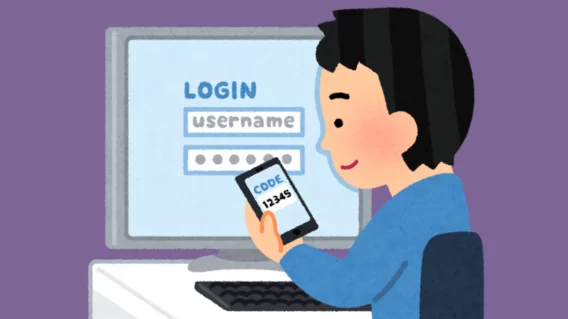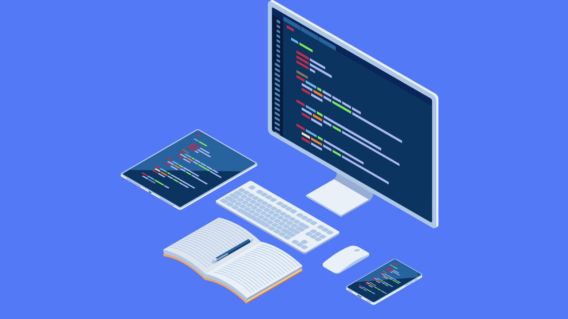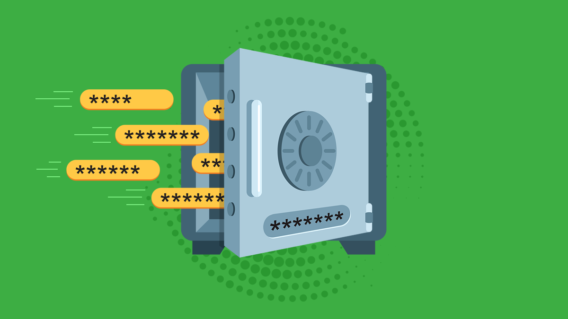How to Prevent Data Leaks & Protect Your Business

When headlines are awash with data breaches at big global tech companies, it’s easy to fall into the trap of thinking that threat actors don’t even bother going after the small fish.
But that’s not true. While a data breach at a major corporation might result in a bigger payoff for cybercrooks, the reality is that small businesses – often contending with limited resources and loose cybersecurity policies – are just as likely to fall victim to a data breach as their larger, deep-pocketed counterparts.
Thankfully, there are a number of things you can do to bolster your security posture and reduce the risk of a breach. Read on for practical tips on how to prevent data leaks as well as high-level advice on how to prevent cyber attacks on businesses of all sizes.
The consequences of a data breach
A data breach can do serious damage to a company’s brand. It goes without saying that consumers want to do business with companies that they perceive to be safe and trustworthy. Failure to uphold that trust can result in severe reputational damage that may be difficult, if not outright impossible, to repair. About 69 percent of consumers say they would avoid a company that had suffered a data breach, even if it offered a better deal than competitors, while 29 percent said they would never use the company again if they were personally affected by a breach, according to a 2019 Verizon study.
There’s also the legal aspect to consider. Businesses have a responsibility to safeguard sensitive customer information and failure to do so can result in legal action. Depending on the location of the business, the industry you operate in and the nature of the incident, you could potentially be held liable for damages or face legal penalties for a data breach.
In addition to legal fees, there are also remediation costs. Investigating and resolving a data breach might involve the hiring of forensic specialists, investing in new IT infrastructure, working with third-party recovery teams to restore affected systems and so on. Exactly how much a security breach costs can vary significantly, but remediation is invariably time-consuming and can be extremely disruptive to an organization’s day-to-day processes.
Different types of security breach
The initial step in preventing data theft is understanding how threat actors gain access to your system in the first place. Below are some of the most common attack vectors.
- Compromised credentials: Login credentials can be harvested through the use of keyloggers and password stealers or, less commonly, by brute-force attacks, which systematically enter every possible character combination until the password is guessed. Attackers may also obtain login credentials by purchasing them on dark web marketplaces, where cybercriminals frequently buy and sell huge databases of passwords that have been stolen and/or leaked in past attacks.
- Phishing: Phishing is a type of social engineering attack whereby a threat actor impersonates a legitimate entity in an attempt to coerce the target into divulging sensitive information or installing malicious software.
- Ransomware: Most modern ransomware attacks include a data theft component. The stolen data is used as additional leverage to pressure victims into paying; non-payment typically results in the data being sold or publicly leaked on the dark web. Cybercriminals may sift through this data to find login credentials that can be used to launch new attacks.
- Physical theft: It’s important to remember that not all data breaches are the result of elaborate cybercrime. Losing a work device due to forgetfulness or theft can easily lead to the exposure of sensitive information.
How to prevent a data leak
All businesses should have at least a foundational understanding of how to prevent security breaches. The following breach prevention best practices can help keep your network secure and reduce the risk of a data leak.
1. Identify critical data
Not all data is created equal – but you can’t secure your most important data if you don’t know what your most important data actually is. Mapping out your IT environment and identifying your critical assets and data repositories (from both your perspective and an attacker’s perspective) is crucial for ensuring high-value targets are prioritized and security resources are allocated effectively. A data coding system should be applied across the company; ideally, all sensitive data should be categorized and each category should have a corresponding security policy that’s enforced system-wide.
2. Monitor the network
Once you’ve identified and categorized your most important data, the next step is to implement networking traffic monitoring, with special attention being given to the mission-critical assets defined in the previous step. Tools such as intrusion detection systems can be useful for spotting anomalous network activity and automatically alerting security administrators, while security incident and event management solutions can help organizations consolidate multiple security data sources into a centralized view of the network.
3. Secure all endpoints
Endpoint security remains a critical part of good cybersecurity posture, particularly with so many organizations now operating on a mix of on-site, remote and BYOD devices. Every device connected to the network should be considered a security risk and a potential entry point for attackers and secured accordingly. Endpoint detection and response tools such as Emsisoft EDR, which ships free with most Emsisoft products, provide visibility across all of your endpoints and can be used to automatically detect potential security threats and respond to events in real-time.
4. Assess the security risk of vendors
When you work with a third-party service provider, you’re putting a lot of trust in that company to handle your data – and that of your customers – responsibly. With this in mind, it’s important to evaluate the security posture of both new and existing vendors to ensure they’re abiding by current best practices and are at low risk of suffering a data breach. Because new cyberthreats are emerging all the time and vendors frequently change their security processes, monitoring supplier risk should ideally be an ongoing and continuous effort.
5. Encrypt your data
All sensitive data should be securely encrypted. Because the risk of a breach is always greater than zero, organizations should operate under the assumption that their data will inevitably be stolen sooner or later. When that security breach does take place, encryption ensures that the stolen data will be unusable and that the attacker cannot read it or use it for leverage.
6. Train your team
Preventing data breaches often starts with your people. Many data breaches are the result of human error so it’s important to provide regular cybersecurity training with a particular emphasis on phishing, malicious email attachments and business email compromise attacks. Training should also cover reporting and escalation processes, ensuring that every member of the organization can answer questions such as ‘What to do if your employer is hacked?’ and ‘Who should I report suspicious activity to?’ Training should be conducted on a regular basis to help keep staff up to date with the latest threats and breach prevention best practices.
Conclusion
The world runs on ones and zeroes, and knowing how to prevent data leaks is an important part of modern business. Monitoring the network, securing endpoints, assessing your security vendors and cybersecurity training can all help bolster your security posture, while encrypting your data ensures that any information stolen during an incident will be rendered unreadable and useless to attackers.
Emsisoft Endpoint Protection: Award-Winning Security Made Simple
Experience effortless next-gen technology. Start Free TrialEmsisoft Anti-Malware is a powerful cloud-based cybersecurity solution that eradicates malware, keeps your endpoints secure and helps protect your network from data breaches. Download your free trial today.


